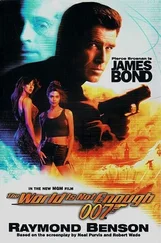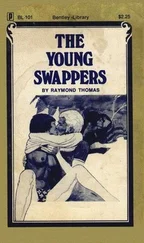The man in the headdress didn’t even know his name. He only referred to him as the hakeem.
The doctor.
And even nestled in the safety of the forward operating base, he could only utter the word in a cowed, hushed tone.
He didn’t have a name to give them. He didn’t have much in terms of hard detail, except that before the invasion, men in darkened, official-looking cars were often seen driving into his compound in the middle of the night. The fearless leader himself had been to see him on a few occasions.
He couldn’t even really describe him, except for one chilling detail that intrigued all those in the room: The hakeem wasn’t Iraqi. He wasn’t even an Arab.
He was a Westerner.
And there were certainly no Westerners on the deck of cards.
For that matter, only one person on the list was not part of the military or the government. Curiously, she was also the only queen in the deck — biologically speaking, anyway. The lowest-ranked card in the deck was a woman, a scientist named Huda Ammash, affectionately nicknamed Mrs. Anthrax, the daughter of a former minister of defense and rumored to be the head of Iraq’s biological weapons program.
The elements were all there. Doctor. Close to Saddam. Westerner. Terrified local. It was enough to get the ball rolling.
Intel was requested and delivered that very night.
Plans were drawn up.
By first light, Rucker and his men had secured the outer cordon with ground forces and armored vehicles. The target location, as pinpointed by the man in the headdress, was a three-story concrete house in the middle of the Saddamiya district of Baghdad. The area hadn’t always gone by that name. It had once been a hard neighborhood. Saddam had grown up on its mean streets, attended school there, and that was where he’d forged his unique take on life. After taking over the country, he’d brought in the bulldozers and had the whole area flattened before redeveloping it as a closed community of imposing modernist concrete and brick houses set behind arcaded walkways and virtually walled off from the rest of the city. It took on his name and became home to those he deemed worthy. The battalion had been in charge of the area since the troops had taken Baghdad and had treated it with caution, given the obvious aversion to the invading forces from the loyalists who still lived there.
The weapons squads took up their positions, the snipers were in place. The assault was ready for initiation.
Rucker had, as per the newly adopted standard procedure in these cases, used the “cordon-and-knock” approach. Once the perimeter was secured, troops had advanced to the house and made their presence known. An interpreter, using a bullhorn, informed those inside that they had ten minutes to come out of the house with their hands up.
Ten minutes later, all hell had erupted.
* * *
As medevacs tended to the wounded, Rucker gave the order to “prep the objective,” to minimize further casualties during the inevitable reentry attempt. Two OH-58D Kiowa choppers flew in and rained down 2.75-inch rockets and machine-gun fire onto the house, while the ground troops unleashed more Mark 19s and a couple of more potent, shoulder-mounted AT-4 antitank missiles.
Eventually, the house fell silent.
Rucker sent his men back in, only this time, two Humvees charged in ahead of them, their.50-caliber machine guns smoking. He soon realized the objective was more than well prepped. His men made their way in with little difficulty, finding several dead bodies and only encountering three solitary and shell-shocked Republican Guards, who were swiftly taken out.
Relief washed over him when he heard the shouts of “Clear” over the radio. His advance troops had confirmed overall control of the site.
Rucker made his way into the hakeem’s house as the dead bodies were being lined up for identification. He looked at their dirty, bloodstained faces and frowned. They were all clearly local men, Iraqis, foot soldiers long abandoned by their commanding officers. He called for the man with the headdress to be brought in. The man was spirited in under heavy guard and allowed to check the dead. With each one, he shook his head, his fear more visible with each negative identification.
The hakeem was nowhere to be found.
Rucker scowled. The operation had required considerable resources, three of his men were wounded, one of them seriously, and it looked as if it was all for nothing. He was about to order another sweep when a voice he recognized as belonging to Sergeant Jess Eddison crackled over the radio.
“Sir.” Eddison’s voice had an unsettling quiver in it that Rucker hadn’t heard before. “I think you need to see this.”
Rucker and his XO followed a squad leader to the inner vestibule of the house, from where the grand, marble-clad stairs ascended to the bedroom areas above. A door off to its side led to the basement. Using torches to light up the windowless passage, the three men made their way carefully down the steps and met up with Eddison and a couple of PFCs from the Second Platoon. Eddison directed his flashlight’s beam into the darkness and led them down the hall.
What they found wasn’t exactly a standard rec room.
Unless your name was Mengele.
The basement covered the whole footprint of the house as well as its outer courtyard. The first few rooms they found weren’t particularly distressing. The first was an office. Its contents seemed to have hastily been cleared out. Shredded papers littered the floor, and a small stack of burnt books lay in a mound of black ash and bindings in a corner. Next door was a large bathroom, followed by another room with sofas and a large TV set.
The room they entered after that was much larger. It was a full-fledged operating room. The fittings and the surgical equipment were state-of-the-art. Its relative cleanliness belied the squalid state of the rest of the house. Presumably, the guards manning the house hadn’t ventured in there. Maybe by choice. Or maybe by fear.
Its floor was wet with a bluish liquid. Rucker and his team followed Eddison, their boots squeaking against the damp stone tiles. The passage led to a lab where, lined up on a white Formica drawer unit along the room’s long wall, sat a row of clear vats filled with a green-blue solution. A few of them were shattered in what seemed like a random, hasty cover-up. The others were intact.
Rucker and his squad leader moved in for a closer look. Tubes fed into the liquid, and suspended in the undamaged vats were human organs: brains, eyes, hearts, and some smaller body parts that Rucker didn’t recognize. A worktable nearby was littered with petri dishes. They had meticulously marked labels that were indecipherable to their untrained eyes. Next to them sat a pair of powerful microscopes. Cables that would have connected to computers led nowhere. All the computers were gone.
Off to one corner, Rucker found another room, long and narrow. Stepping inside, he found several large, stainless-steel fridges lined up side by side. He thought about whether to check them himself, or to wait for a hazmat team. He decided there wasn’t a risk, given the lack of locks or markings, and opened the first of the fridges. It was filled with neatly stacked vats containing a thick red liquid. Even before he saw the labels marked with dates and names, Rucker knew the vats contained blood.
Human blood.
Not the small, medical pouches he was used to.
This was blood by the barrel-load.
Eddison led them through to the part of the basement that he had initially signaled them about. A narrow corridor led to another area that must have been excavated under the courtyard, though Rucker couldn’t be sure, the dark maze confusing any sense of direction he may have enjoyed aboveground. It was, for all intents and purposes, a prison. Cell after cell lined either side of the passage. The interiors of the cells were decently furnished with beds, toilets, and sinks. Rucker had seen far worse. It felt more like a windowless hospital ward, if anything.
Читать дальше












